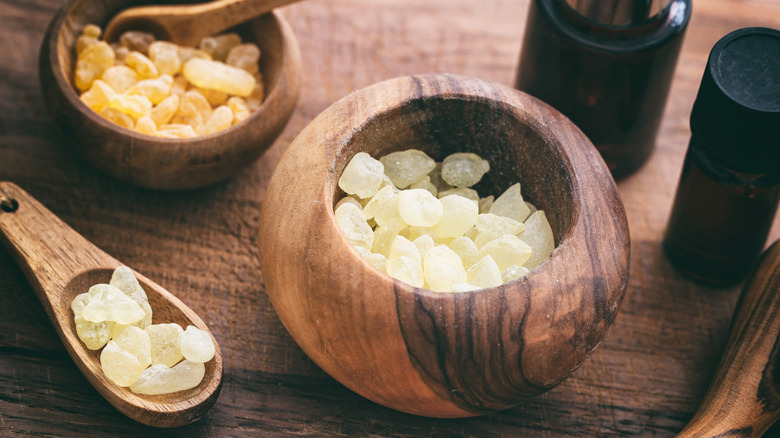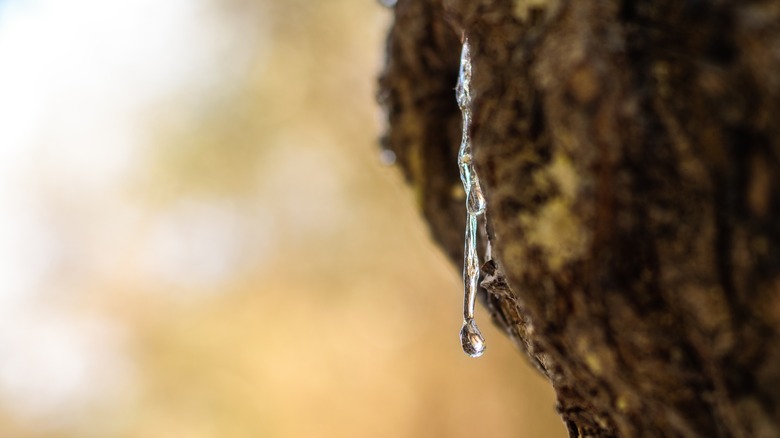Chios Mastiha Is The Greek Liqueur Known For Its Ancient Healing Powers
On the island of Chios, Greeks strategically cut the bark of trees to expose a gummy, sticky sap. The aromatic resin from the mastic tree has become closely linked with the island. Mastic is distilled there, resulting in a liqueur only made on Chios. Pine-smelling resin hardens into small stones that are collected after falling from the tree and can be used as a culinary flavoring, chewing gum, or distilled into liqueur. The earthy, woodsy-flavored liqueur is known as Chios mastiha, which is distilled in copper stills and enjoyed by Greeks and visitors alike.
Chios mastic was medicinally used by ancient Greeks to address digestive issues, and Romans combined mastic with honey, egg, and wine to make a spiced drink. Traces of mastiha can be found in the writings of 5th-century Greek Herodotus. Even then Greeks were chewing the resin in what would become known as the first kind of chewing gum. Mastiha was used by Hippocrates and other Greeks interested in medicinal elements and was given to patients with stomach, oral, and digestive issues. Romans, Europeans, and Arabs also recognized the healing potential of mastic. These beliefs have been reinforced by the scientific community who have demonstrated that mastic does, indeed, have a positive impact in supporting good health.
A unique taste with beneficial properties
The Greeks were on to something: Mastic has been proven to offer antimicrobial, antifungal, and anti-inflammatory properties. Researchers have investigated mastiha's effectiveness in killing bacteria responsible for gastric cancer and ulcers, and Chios mastiha has been used to treat stomach pain and gastric disorders. Chewing mastiha has been shown to prevent tooth decay and plaque buildup. Mastiha can even help with skin issues. Clearly, this is no ingredient to cry about, and mastiha has been sought out for centuries for plenty of good reasons.
Though mastic trees are found throughout Greek islands, only resin from trees on the southern part of Chios is used for liqueur. During the Ottoman Empire, Chios mastic was a valuable commodity, and in the 18th century, natural mastic and anise seeds were distilled to create mastic ouzo. Mastiha is often presented as an after-dinner liqueur, but it has been embraced by bartenders serving up aperitifs and mixing up unique cocktails. The liqueur can be served with sweets or coffee, yet it can also be poured over ice. It's syrupy and sweet but doesn't provoke a puckering of the lips. Instead, drinkers will be met with a fresh taste of pine and only a mild boozy zing. The taste isn't all that is captivating about this unique beverage. In 1992, mastiha received the Protected Designation of Origin status from the European Union to recognize the preciousness of the authentic, local product.

